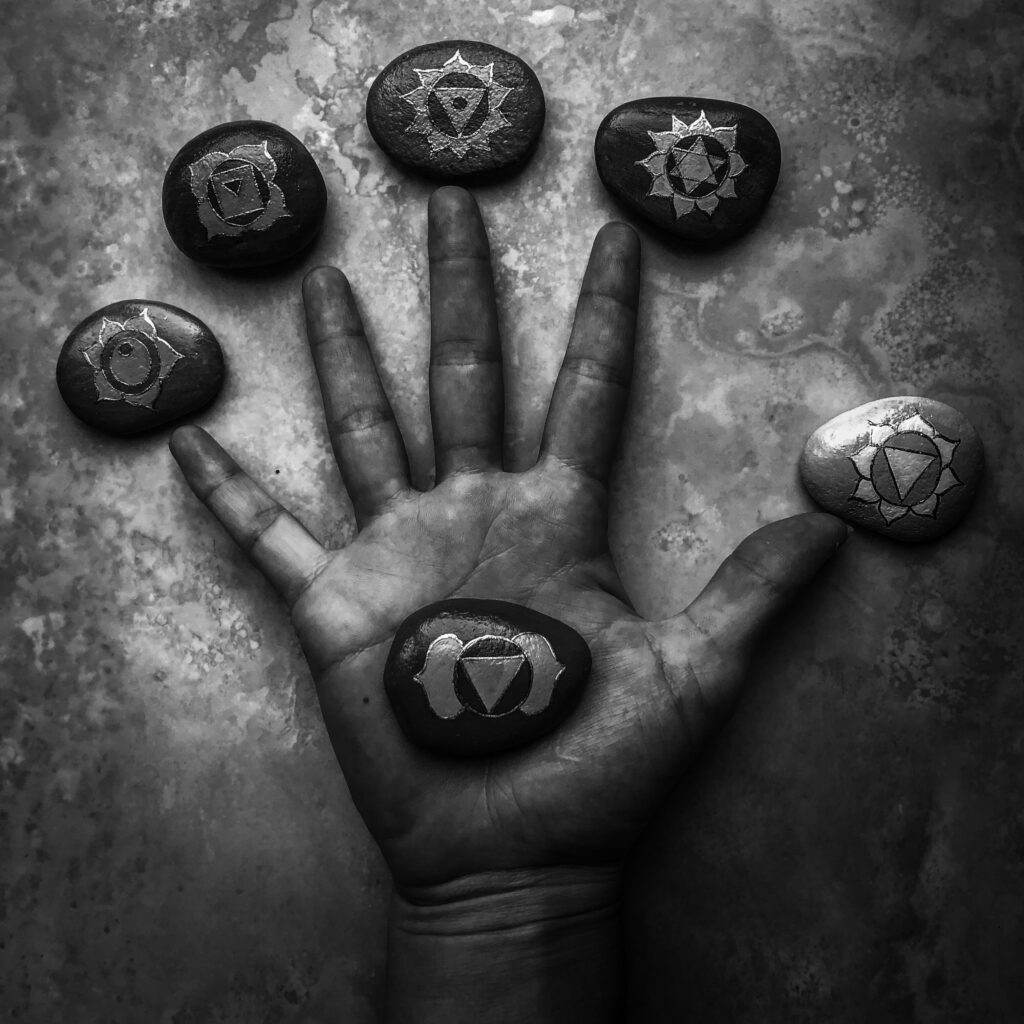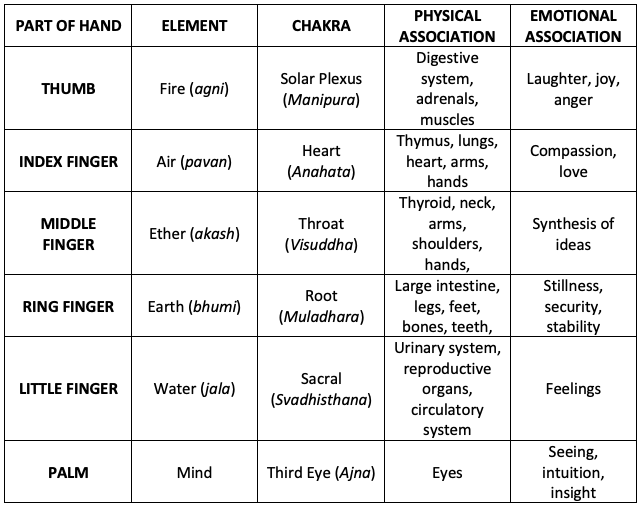A mudra is a spiritual gesture practiced in various Indian religions considered to be an energetic ‘seal’ or mark of authenticity. Typically, they are performed with just the hands or fingers but can involve the entire body.
Probably the most well know of these gestures is Namaskar Mudra, known throughout the west as Namaste.

What is the significance of practicing mudras?
Indian philosophy teaches that the way in which the fingers move and touch each other influences the flow of prana– our life-giving energy.
Great significance is placed upon the importance of ensuring unhindered flow of prana throughout the body to ensure optimal wellbeing. It is believed that practicing mudras aids this process. Indeed, for many centuries yogis have used the knowledge of these hand gestures to positively impact both their physical and mental wellbeing and to further their spiritual development.
Our hands are second only to our face in their expressive capacity and we already use them on a daily basis to communicate and connect with the world around us. It therefore makes sense that understanding the influence of their subtle movements and incorporating them into our asana and meditation practice might help us to connect and communicate with our own subtle energy.
What is prana? – a bit more detail
Prana is most commonly translated to vital life-force energy and is considered to be the subtle energy that flows through our pranamaya kosha. This is the layer of our being that includes but is not limited to the physical body and can best be considered as our aura. This energy travels through channels known as nadis, of which there are thought to be 72,000. You may also have heard these channels referred to as meridians in Eastern medicine philosophy. Similarly, you might also have heard of pranabeing referred to as chiin Traditional Chinese Medicine. The nadisjoin at energy centers known as the chakras, these can be considered major junctions of the pranahighway that collect, transform and distribute this energy.
The uninterrupted flow of prana through our body is what contributes to optimal vitality and wellbeing. Equally, blockages are said to result in illness in which the affected body part may become susceptible to certain ailments.Asana and pranayama practices as well as mudras are all thought to contribute to optimal flow of prana. Mudras are thought to be particularly effective because most of the major nadiseither start or finish in the hands or feet. In this way the hands can be used to cleanse the channels, remove obstructions and channel the healing force of prana towards areas of need.
Mudras, Elements and Chakras
According to ancient Indian tradition each of the fingers relate to one of the five elements (maha-bhootas). These elemental energies are also connected with a corresponding chakra and depending upon which of these elements and chakras are activated by the mudra, determines the physical, emotional and spiritual benefits of that mudra.


Mudras – The Basics
Mudras can range from simple apposition of two digits to more complex asymmetrical positions involving both hands. Generally, however, they are formed by touching the thumb to the tip, nail, knuckle or base of another finger, thus using the fire element to stimulate one or more of the other elements.
There are 5 basic finger positions:
- Thumb to fingertip – encourages stability in linked element.
- Thumb to nail or knuckle (back of finger) – decreases the linked elements influence.
- Thumb to base of finger – increases the linked elements influence.
- Palms facing upwards – open to receive energy and inspiration.
- Palms facing down – encourages a sensation of feeling grounded or rooted.
To learn more about some of the commonly practiced mudras, see Common Mudras Explained.
Further Reading:
- Saradananda, S. (2015) Mudras for Modern Life. London. Watkins Media Limited.
- Judith, A. (2017) Wheels of life (2nd Ed). Minnesota. Llewellyn Publications